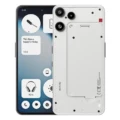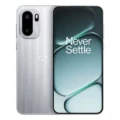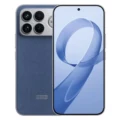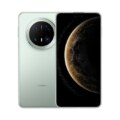Xiaomi Redmi 15C 4G
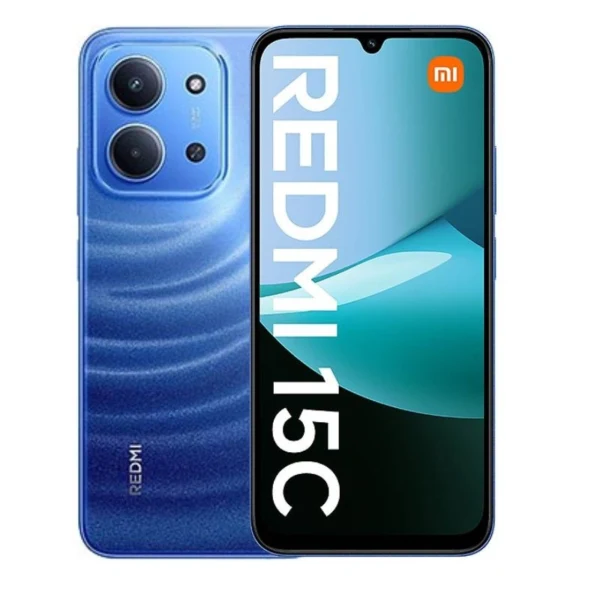

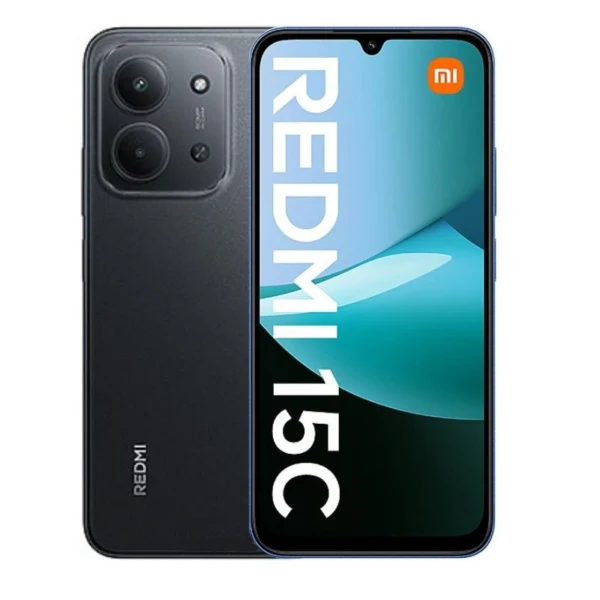

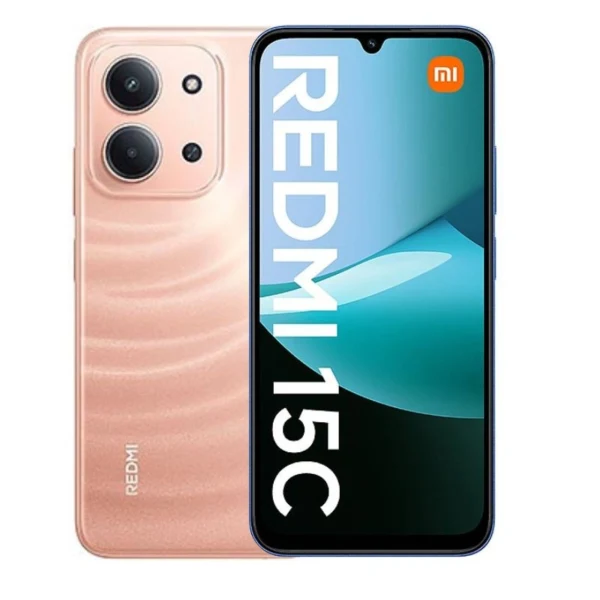
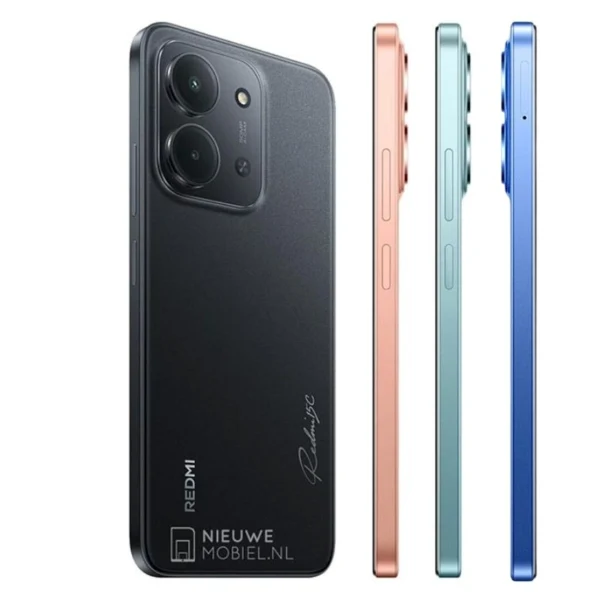
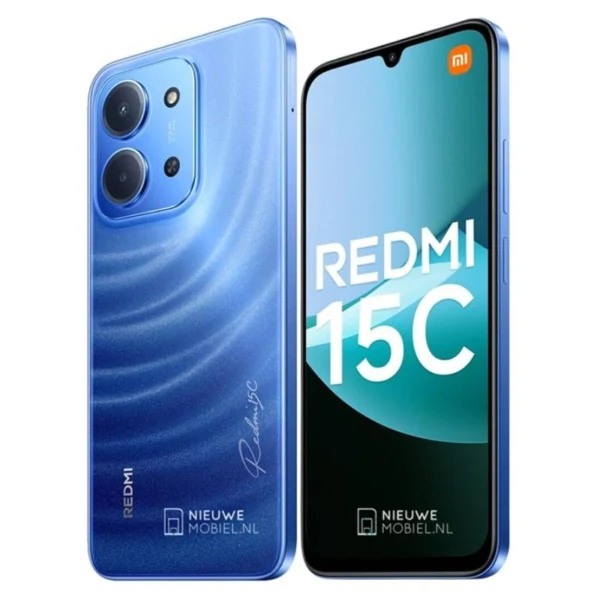

Full Specifications
Price in BD
| Official | 6GB+128GB - 14,999 TK |
General Info
| Announced | 1 August, 2025 |
| Status | Available |
| Released | 1 August, 2025 |
| Brand | Xiaomi |
| Model | Redmi 15C 4G |
| Made By | China |
Network
| Technology | GSM / HSPA / LTE |
| 2G bands | GSM 850 / 900 / 1800 / 1900 |
| 3G bands | HSDPA 850 / 900 / 2100 |
| 4G bands | LTE |
| Speed | HSPA, LTE |
Body
| Dimensions | 171.6 x 79.5 x 8 mm (6.76 x 3.13 x 0.31 in) |
| Weight | 205 g (7.23 oz) |
| SIM SIM (Subscriber Identity Module) is a small card that contains mobile network subscriber's account information. This allows the phone using the card to attach to a mobile network. The SIM card is most commonly associated with GSM and UMTS mobile networks. Moving a SIM card from one phone to another allows a subscriber to switch mobile phones without having to contact their mobile network carrier. SIM cards can also be used by a phone to store limited amounts of data, such as phone numbers and text messages. | Nano-SIM + Nano-SIM |
| Build | Glass front (Gorilla Glass 3), plastic frame, glass back or silicone polymer (eco leather) back |
| Colors | Moonlight Blue, Mint Green, Midnight Gray, Twilight Orange |
| IP Rating | IP64 dust tight and water resistant (water splashes) |
| Models | 25078RA3EA |
Display
| Display Type Display Technology => A number of display technologies and types used in mobile phones => TFT (Thin Film Transistor), IPS (In-Place Switching), OLED (Organic Light Emitting Diode), AMOLED (Active-Matrix Organic Light-Emitting Diode), Super AMOLED (an even advanced version of AMOLED), Resistive Touchscreen (Resistive touchscreens contain two layer of conductive material with a very small gap between them which acts as a resistance), Capacitive Touchsceen (Capacitive touchscreen technology consists of a layer of glass coated with a transparent conductor) | IPS LCD |
| Size | 6.9 inches, 114.9 cm2 |
| Screen to Body | ~84.3% |
| Refresh Rate | 120Hz |
| Resolution | 720 x 1600 pixels |
| Aspect Ratio | 20:9 |
| Pixel Density Pixel Density (PPI) is refers to the concentration of pixels on a particular display, measured in pixels per inch (ppi). Pixel density is calculated by dividing the diagonal pixel resolution of a display by its diagonal size, higher pixel density better display quality. | ~254 ppi |
| Protection | Corning Gorilla Glass 3 |
| Touch Screen | Capacitive Touchscreen, Multi-touch |
Performance
| Chipset Chipset is a group of integrated circuits designed to perform one or a more dedicated functions, often with real time computing constraints, Popular smartphones are equipped with more advanced embedded chipsets that can do many different tasks depending on their programming. | Mediatek Helio G81 Ultra (12 nm) |
| CPU CPU (Central Processing Unit) mostly known as processors, CPU processes instructions in order to carry out certain functions that make your device operate properly. Processors are often described as the brain of computers, smartphones and tablets, Smartphones and tablets rely on processors to carry out their every task, Processors are an incredibly important factor in selecting any type of computing device, including your smartphone. | Octa-core (2x2.0 GHz Cortex-A75 & 6x1.8 GHz Cortex-A55) |
| GPU GPU (Graphics Processing Unit) is a single-chip processor designed to rapidly manipulate and alter memory to accelerate the creation of images in a frame buffer intended for output to a display, This includes things such as lighting effects, object transformations, and 3D motion. | Mali-G52 MC2 |
| OS | Android 15 |
| UI | HyperOS 2 |
Memory
| RAM RAM (Random Access Memory) is a type of computer memory that can be accessed randomly, any byte of memory can be accessed without touching the preceding bytes that allows information to be stored and accessed quickly from random locations. RAM is the most common type of memory found in computer systems, smartphones, tablets and other electronic devices. | 6 GB |
| ROM | 128 GB |
| Card Slot Memory Card Slot is a special slot for inserting a memory card. Memory cards allow you to expand the phone's built-in memory, A memory card (sometimes called a flash memory card or a storage card) is a small storage medium used to store data such as text, pictures, audio, and video, for use on small, portable or remote computing devices such as mobile phones, mp3 players, digital cameras. | microSDXC (dedicated slot) |
Main Camera
| Dual |
50 MP, f/1.8, 28mm (wide), 1/2.76", 0.64µm, PDAF 0.08 MP QVGA, f/3.0 |
| Features | HDR |
| Flash Flash Light => There is commonly two types of flash lights are used in camera mobile phones, LED Flash (LED flash offers lower power consumption with drive circuitry that takes up very little room, LEDs can be strobed faster than any other light source), Xenon Flash (xenon flash produces an extremely intense full-spectrum white light for a very short duration) | LED flash |
| Video Recording | 1080p@30fps |
| Autofocus | |
| Settings | Exposure compensation, ISO control |
| Zoom | Digital Zoom |
Selfie Camera
| Single | 8 MP, f/2.0, (wide), 1/4.0", 1.12µm |
| Features | HDR |
| Video Recording | 1080p@30fps |
Sound
| Loudspeaker | |
| 3.5mm jack |
Connectivity
| WLAN Wi-Fi is a popular wireless networking technology using radio waves to provide high-speed network connections that allows devices to communicate without cords or cables, Wi-Fi is increasingly becoming the preferred mode of internet connectivity all over the world. | Wi-Fi 802.11 a/b/g/n/ac, dual-band |
| Bluetooth Bluetooth is a wireless communications technology for exchanging data between mobile phones, headsets, computers and other network devices over short distances without wires, Bluetooth technology was primarily designed to support simple wireless networking of personal consumer devices. | 5.4, A2DP, LE |
| Positioning | GPS, GLONASS, GALILEO, BDS |
| NFC NFC (Near field communication) is a set of standards for smartphones and similar devices to establish peer-to-peer radio communications with each other by touching them together or bringing them into proximity, usually no more than a few inches. | |
| Infrared Infrared connectivity is an old wireless technology used to connect two electronic devices. It uses a beam of infrared light to transmit information and so requires direct line of sight and operates only at close range. | |
| Radio | |
| USB | Type-C 2.0, OTG |
Sensors
| Sensors Sensors are electronic components that detects and responds to some type of input from the physical environment. The specific input could be light, heat, motion, moisture, pressure and location, The output is generally a signal that is converted to use in computing systems, a location sensor, such as a GPS receiver is able to detect current location of your electronic device. | accelerometer, compass |
| Fingerprint | side-mounted |
| Face Unlock | Yes |
| Others | Virtual proximity sensing |
Battery
| Battery Type Battery Type => Cell phones run on various kinds of batteries depending on the manufacturer, phone size or shape and features. There are basically four types of cell phone batteries => Lithium Polymer, Lithium Ion, Nickel Metal Hydride and Nickel Cadmium. | Li-Pol (Lithium Polymer) |
| Capacity Battery Capacity is a measure (typically in Amp-hr) of the charge stored by the battery, and is determined by the mass of active material contained in the battery. The battery capacity represents the maximum amount of energy that can be extracted from the battery under certain conditions. | 6000 mAh |
| Charging | 33W wired, PD |
Tests
PROS
- Display IPS LCD, 120Hz
- Chipset Mediatek Helio G81 Ultra
- Card slot microSDXC (dedicated slot)
- 3.5mm jack, FM Radio, NFC
CONS
- Not 5G Supported
- No Infrared port
Xiaomi Redmi 15C 4G Price in Bangladesh
Xiaomi Redmi 15C 4G is now available in variants 6GB+128GB. Now, Xiaomi Redmi 15C 4G’s Price is 14,999 Taka in Bangladesh.
Xiaomi Redmi 15C 4G Overview
The Xiaomi Redmi 15C 4G comes with a large body measuring 171.6 x 79.5 x 8 mm and weighing 205g, making it solid yet comfortable for big-screen lovers. Built with a glass front (Gorilla Glass 3) plastic frame, and options for glass back or eco-leather, it looks premium in hand. With IP64 rating, the phone is resistant to dust and splashes, giving it extra durability. Available in Moonlight Blue, Mint Green, Midnight Gray and Twilight Orange, it offers stylish choices for every user.
The Redmi 15C 4G features a massive 6.9-inch IPS LCD panel with a 120Hz refresh rate, delivering smooth scrolling and better gaming visuals. While it only has HD+ resolution (720 x 1600 pixels) at ~254 ppi, the screen still looks vibrant and colorful for everyday tasks. The Gorilla Glass 3 protection ensures extra safety against scratches and accidental drops.
Powered by the Mediatek Helio G81 Ultra (12nm) chipset, the phone offers reliable performance for budget users. Its octa-core CPU with Mali-G52 MC2 GPU handles apps, browsing and casual games without lag. Running on Android 15 with HyperOS 2, it feels modern and responsive. With 6GB/8GB RAM and up to 256GB storage (expandable via microSDXC) the device provides enough room for apps, photos and videos.
For photography, the Redmi 15C 4G packs a 50MP main camera with PDAF, ensuring detailed and clear shots in good lighting conditions. It is paired with a QVGA depth sensor for portrait shots. Camera features include HDR and LED flash, while video recording is supported at 1080p@30fps. On the front, the 8MP selfie camera also supports HDR and 1080p video recording, making it suitable for video calls and social media.
The phone comes with a huge 6000mAh battery, making it perfect for heavy users who need long-lasting power. With 33W wired fast charging (PD supported) the Redmi 15C can charge quickly, giving hours of backup in just minutes. This makes it an excellent option for students, travelers and gamers who don’t want frequent charging interruptions.
The Redmi 15C 4G is well-equipped with dual SIM support, Wi-Fi ac (dual-band), Bluetooth 5.4 GPS and even NFC (market dependent). For entertainment, it includes a 3.5mm headphone jack, FM radio and a loudspeaker. Security is handled by a side-mounted fingerprint scanner and face unlock, while the USB Type-C 2.0 with OTG support makes file transfer easier.
What is the price of Xiaomi Redmi 15C 4G in Bangladesh?
The unofficial price is 14,999 BDT for the 6GB+128GB variant.
Does Redmi 15C support 5G?
No, the Redmi 15C only supports 4G LTE networks.
How big is the display of Redmi 15C 4G?
It has a massive 6.9-inch IPS LCD display with 120Hz refresh rate.
What chipset does the Redmi 15C 4G use?
It is powered by the Mediatek Helio G81 Ultra (12nm) processor with Mali-G52 GPU.
How good is the battery life of Redmi 15C 4G?
The phone comes with a 6000mAh battery and supports 33W fast charging, giving excellent endurance.
How good is the camera of Redmi 15C 4G?
It features a 50MP main camera and an 8MP selfie camera, both supporting 1080p video recording.
Why should you buy this Xiaomi Redmi 15C 4G phone?
If you’re looking for a budget smartphone with a big display, massive battery, and reliable cameras, the Redmi 15C 4G is a great choice. At just 14,500 BDT (6GB+128GB variant, unofficial) it offers features like 120Hz display, 50MP camera, 6000mAh battery with 33W fast charging, and Android 15 with HyperOS 2, which are rarely seen in this price range.
| Model | : | Redmi 15C 4G |
| Released | : | 01-Aug-2025 |
| RAM | : | 6 GB |
| ROM | : | 128 GB |
| Price | : | 14,999 TAKA |
Our Verdict on the Xiaomi Redmi 15C 4G
The Xiaomi Redmi 15C 4G is an excellent option for budget-conscious buyers in Bangladesh. While it only supports 4G and has an HD+ display, its smooth 120Hz refresh rate, huge 6000mAh battery and stylish design make it stand out among entry-level devices. At this price, it delivers great value for money and is perfect for students, casual users and those who need a long-lasting budget smartphone.
Follow Us on Facebook
FollowReviews
Disclaimer Note
We always try our best to keep our website content and information updated and correct, the material and information contained on our website is for general information purposes only, You should not rely upon the material and information as a basis for making any business, legal or any other decisions.



